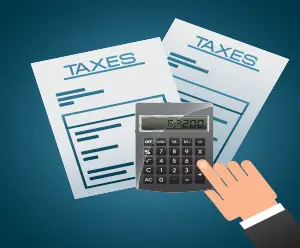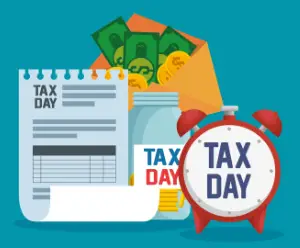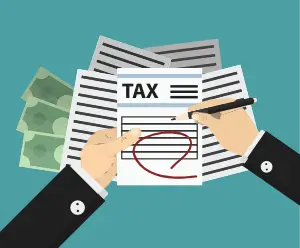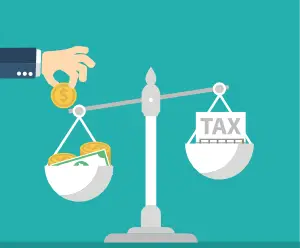
Understanding the IRS Substitute for Return
Click to ask Mike Ask Mike The Internal Revenue Service (IRS) Substitute for Return (SFR) is a term many taxpayers

Tax season can be a stressful time for many people, but it doesn’t have to be. By preparing in advance and taking advantage of all the resources available to you, you can make the process much smoother and less time-consuming.
This article will provide you with a comprehensive overview of how to prepare for tax season 2023. It will cover everything from gathering your paperwork to filing your return, and offer tips on how to save money on your taxes.
Step 1: Gather Your Paperwork
The first step in preparing for tax season is to gather all of your paperwork. This includes:
If you are self-employed, you will also need to gather additional paperwork, such as a Schedule C form and a Schedule SE form.
Step 2: Decide Whether to File Yourself or Hire a Tax Preparer
Once you have gathered all of your paperwork, you need to decide whether to file your taxes yourself or hire a tax preparer. If you have a relatively simple tax situation, you may be able to file your taxes yourself using tax preparation software or a free online tax preparation service. However, if you have a more complex tax situation, it may be worth hiring a tax preparer to ensure that your return is filed correctly and that you are taking advantage of all the deductions and credits you are entitled to.
Step 3: Maximize Your Tax-Advantaged Accounts
One of the best ways to save money on your taxes is to maximize your contributions to tax-advantaged accounts, such as individual retirement accounts (IRAs) and 401(k) plans. Contributions to these accounts are tax-deductible, which means that they reduce your taxable income for the year. Additionally, earnings on these accounts grow tax-deferred, meaning that you don’t have to pay taxes on them until you withdraw the money in retirement.
The deadline to contribute to an IRA for the 2022 tax year is April 18, 2023. The deadline to contribute to a 401(k) plan for the 2022 tax year is December 31, 2022, for most employees. However, some employers may allow employees to make catch-up contributions to their 401(k) plans in the following year.
Step 4: File Your Tax Return
Once you have gathered all of your paperwork and made any necessary contributions to your tax-advantaged accounts, you are ready to file your tax return. You can file your return electronically or by mail.
If you are filing electronically, you will need to create an account with the IRS or a tax preparation software provider. Once you have created an account, you will be able to enter your tax information and file your return directly with the IRS.
If you are filing by mail, you will need to complete a paper tax return and mail it to the IRS. You can find paper tax forms on the IRS website.
Tips for Saving Money on Your Taxes
There are a number of things you can do to save money on your taxes, including:
Conclusion
By following the tips above, you can make tax season less stressful and save money on your taxes. If you have any questions, be sure to consult with a tax preparer.
You can now ask our AI assistant any questions you have about your tax debt or any tax-related issues. Whether you’re unsure about payment plans, need clarification on penalties, or want information on how to resolve your tax situation. Our AI is ready to assist you with all your tax-related concerns.

By interacting with our AI assistance, you agree to our terms & conditions. Enjoy our AI Tax Assistant responsibly.
Ask me any questions...
Related Posts

Click to ask Mike Ask Mike The Internal Revenue Service (IRS) Substitute for Return (SFR) is a term many taxpayers

Click to ask Mike Ask Mike The Internal Revenue Service (IRS) Substitute for Return (SFR) is a term many taxpayers

Click to ask Mike Ask Mike The Internal Revenue Service typically operates within a 10-year window, commencing from the

Click to ask Mike Ask Mike The Internal Revenue Service (IRS) operates within specific timeframes dictated by statutes of limitations

Click to ask Mike Ask Mike understanding the ins and outs of the 10-year statute of limitations (SOL) is essential.
Recent Posts

Click to ask Mike Ask Mike The Internal Revenue Service (IRS) Substitute for Return (SFR) is a term many taxpayers

Click to ask Mike Ask Mike The Internal Revenue Service (IRS) Substitute for Return (SFR) is a term many taxpayers

Click to ask Mike Ask Mike The Internal Revenue Service typically operates within a 10-year window, commencing from the

Click to ask Mike Ask Mike The Internal Revenue Service (IRS) operates within specific timeframes dictated by statutes of limitations

Click to ask Mike Ask Mike understanding the ins and outs of the 10-year statute of limitations (SOL) is essential.
Disclaimer: This is educational content, not legal, accounting, or tax advice.
This is a tax debt resource website, not to be used in lieu of a tax attorney or for legal advice. All information, Ai chat responses, articles, materials, and content are intended to inform users on a variety of tax topics. In no way is it intended to be construed as accounting, legal, tax, other services or advice. This site is not intended to be used to avoid tax penalties or tax debt that may be imposed by law. Terms and Conditions. Your use of this site constitutes acceptance of the following terms and conditions.
This is a tax debt resource website, not to be used in lieu of a tax attorney or for legal advice. All information, Ai chat responses, articles, materials, and content are intended to inform users on a variety of tax topics. In no way is it intended to be construed as accounting, legal, tax, other services or advice. This site is not intended to be used to avoid tax penalties or tax debt that may be imposed by law. Terms and Conditions. Your use of this site constitutes acceptance of the following terms and conditions.
© 2023 · Tax Debt Monster, Inc. All rights reserved

For all Tax Professionals that would like to partner up with us. By partnering with us, you’ll help us connect and make a positive impact in the tax community. Partner up with us and receive a complimentary Ai Tax Sidekick to help support your clients at no cost! Click here if you’re interested in our Partner-Up program

By interacting with our AI assistance, you agree to our terms & conditions. Enjoy our AI Tax Assistant responsibly.
How may I help you with your tax issue?